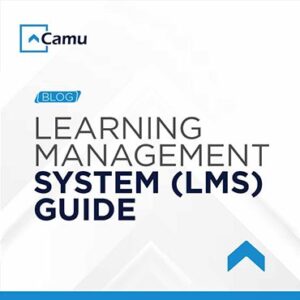
The expectations of all parties involved in the education programme are not met by the conventional peer group structure. The rigid system fails on many fronts at the input level even if it attempts to achieve parity in output. The necessity for creative teaching methods is driven by the dynamic management environment. The choice-based credit system (CBCS), which enables students to tailor the curriculum to meet their needs, is progressively gaining favour in higher education institutions. Once CBCS for higher education is implemented, students can choose the courses they want to take, the level of difficulty—from a basic concept-based course to an advanced level course—the order in which they should be taken, and even the professors who will teach them.
The choice-based credit system (CBCS) system’s programme is designed to meet the needs of its clients, and students. This necessitates a broad range of course offerings, as well as the need for the same course to be tailored for varying credits and contact hours based on the needs of the students. Although the importance of CBCS for all courses in higher education cannot be overstated, it is indisputable that it plays a crucial part in improving the management programme.
What is meant by the Choice-Based credit system(CBCS)?
A student-centred educational paradigm, popularly referred to as Choice Based Credit System (CBCS), provides students with a fantastic opportunity to learn courses & subjects of their choice – core, optional, open or global electives, & skill-based courses. The CBCS grading scheme differs from the conventional educational model in that it is based on the number of credits earned each semester or term. Gives students or knowledge seekers the flexibility to select their courses from a range of elective, core, and soft skill courses, providing a convenient and effective teaching-learning platform. Students have the ability to choose courses from the mandated courses, which include core, elective, minor, or skill-based courses, through the Choice-Based Credit System (CBCS).
Grading systems are frequently used to evaluate the courses; these systems are thought to be superior to conventional marking systems. The traditional higher education system didn’t give students a lot of options. The instructional materials for the course were outdated, redundant, and preset. The traditional segregated courses lacked current applicability, making it difficult for students to utilise their knowledge base later in their work environment, business, or life.
What makes a Choice-Based credit system (CBCS) a differentiator?
The Choice-Based Credit System for higher education or CBCS for higher education follows a semester-by-semester structure, with even and odd semesters adding up to an academic year. The CBCS uses a grading and evaluation system to map student performance rather than assigning grades in terms of percentages. It adheres to a credit system that is connected to the course materials made available to students. This not only creates possibilities for learning but also makes learning goals and objectives evident. A credit system for higher education evaluates different factors, including:
- Student performance
The information must be put into the system once the institution has decided on the subjects, credits, pairing, prerequisite courses, etc. for the specific course. Students should be able to choose the subject and instructor that best suits their interests using the system. This method of subject selection will guarantee a student’s highest achievement. When teachers give notes, administer exams, and have discussions with students on the subject matter, learning becomes more enjoyable for the students and improves their performance.
- Learning outcomes
Learning outcomes encourage educators and learners to consider total growth as opposed to focusing solely on theoretical topics in the classroom. By giving individuals the freedom to select courses that match their interests, aspirations, and objectives, the Choice-Based Credit System empowers students to curate their professional development.
- Entrepreneurship skills, Innovation, contact hours, creativity and talent
The University Grants Commission (UGC) launched the CBCS system, which advances and encourages the educational liberalisation of current traditional higher education models.
Key benefits of CBCS
The CBCS system bridges the gap between professional and social exposure in addition to providing a thorough education. The student may opt for interdisciplinary or cross-disciplinary courses. According to each student’s IQ level, a mentor would help students choose their courses which would support research, community engagement, and collaboration. The main benefit of CBCS is the walk-in/walk-out certification programme offered by CBCS, which gives students more freedom to select the courses they want to study while simultaneously providing options for certification. Students are extremely motivated to gain more credits and have the option of enrolling in basic or advanced courses at their own speed. Credits may be transferred with CBCS if a student changes their area of study. The move from numerical marking to grading includes the use of CBCS. Grading lessens the stigma of “failure,” and credit-based grading is regarded as preferable because it encourages student mobility across institutions inside the country and abroad.
Key benefits of CBCS to faculty
The advantages of CBCS for faculty members are outlined in the list below.
1. Flexibility in Curriculum Design
In contrast to the traditional educational system, the CBCS method offers teachers a novel option to build and prepare the whole syllabus and curriculum at their convenience. However, they must make sure that their curriculum complies with the UGC’s criteria.
2. Establish the criteria for the evaluation.
The credits awarded for passing a course are up to the teachers’ discretion. The credits will be made up of the following: Classroom (C), Experimental (E), and the results of the written or theoretical test (T).
3. Enhanced Process of Teaching and Learning
Teachers now have the option to implement new teaching techniques that will aid the new generation of students in learning more effectively and precisely as a result of the curriculum revisions. The integration of the Choice-Based Credit System (CBCS) with the Student Information System (SIS) and Learning Management System (LMS) may make it easier for teachers to plan quizzes, seminars, and other learning opportunities on a bigger scale.
4. Less Assessment Burden on Teachers
Teachers don’t need to worry about assessment because the credit system has replaced the old grade system and evaluation criteria are defined up front when students choose their courses. Automatic evaluation is carried out as the student gets credits with the aid of the LMS and SIS. Everything is based on the student’s level of advancement. In a nutshell, the CBCS system has enormous potential for completely reshaping India! Educators might choose to support school software like LMS and SIS with a Choice-based credit system integrated to increase its benefits. It may simplify every aspect of schoolwork, including assisting students in enrolling in courses, developing curricula, and calculating credits and assessment scores.
How Camu will aid in the rollout of CBCS?
Through Camu digital campus, Camu offers a variety of amusing features and capabilities that make adapting CBCS easier. The Student Information System with a Choice-Based Credit System, for instance, is used to manage a student’s lifecycle from admission through graduation. Records, registrations, and grades for students must be managed by institutions effectively. With the cloud-based SIS with Choice Based Credit System, the institute can work more effectively and systematically than it can with manual systems, which can result in the loss or misplacement of crucial information. It also supports flexible assessment dates, methodically configures the accounts receivable system, and creates new service standards that can be tracked in real-time. Additionally, you may help with the compilation of analytical reports, make lesson plans, and provide other people access to data. Above all, Camu has an interactive dashboard that makes it possible to track all types of data thoroughly.







